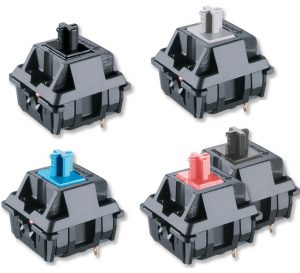Discover Just How a Membrane Switch Improves Durability and Capability in Instruments
Discover Just How a Membrane Switch Improves Durability and Capability in Instruments
Blog Article
Comprehending the Functionality of Membrane Layer Changes for Interface Gadget
The functionality of membrane switches over stands for a substantial improvement in customer interface layout, incorporating performance with visual convenience. These buttons operate through a multi-layered structure that translates individual communications right into electric signals, enabling both small designs and resilience versus ecological aspects. As sectors significantly prioritize user experience, recognizing the subtleties of membrane switch modern technology ends up being necessary. What ramifications do these advancements hold for future applications, and how might they redefine user communications across different devices?
What Are Membrane Layer Switches?
Membrane buttons are ingenious user interface gadgets that facilitate customer interaction with digital equipment. These functional parts contain several layers, including a visuals overlay, spacer, and a printed circuit layer. The layout permits a smooth integration into various electronic devices, enhancing both the visual and useful aspects of interface.
Membrane layer switches are generally utilized in a vast array of applications, from family home appliances to commercial machinery and clinical devices. Their building and construction generally features a slim profile, making them a perfect choice for compact designs. The responsive responses given by these buttons can be engineered to meet specific customer choices, making sure efficient communication in between the customer and the gadget.
Sturdiness is one more significant benefit of membrane switches, as they are immune to dust, moisture, and chemicals, which enhances their life-span sought after environments. In addition, these buttons can be personalized in terms of form, size, and visuals layout, enabling branding and user-specific features. On the whole, membrane layer switches stand for a sensible remedy for improving customer experience in electronic devices, incorporating capability with visual charm in an efficient fashion.
Exactly How Membrane Switches Over Job
Operating on a simple principle, membrane layer changes utilize a split building and construction to sign up individual input effectively. Each button contains numerous layers, consisting of a printed circuit layer, a spacer layer, and a top visuals layer, which are designed to function with each other effortlessly. When a customer presses the top layer, it presses the spacer layer, bringing the conductive components of the circuit layer into contact with each various other.
This contact produces a closed circuit, indicating the tool to carry out a particular feature. The design enables for numerous configurations, including responsive responses, which can enhance the individual experience by giving a physical sensation upon activation. The materials utilized in membrane layer buttons commonly consist of adaptable substratums, such as polyester or polycarbonate, which make sure sturdiness and resilience against damage.

Secret Advantages of Membrane Layer Buttons

An additional considerable advantage is their density. Membrane switches are slim and lightweight, which makes it possible for suppliers to conserve space in their tools without compromising functionality. This feature is specifically helpful in applications where weight and volume are crucial considerations.
In addition, membrane layer switches are immune to dirt, wetness, and chemicals, boosting their durability. This strength prolongs their lifespan and decreases the requirement for frequent substitutes, leading to cost financial savings gradually.
Furthermore, the tactile feedback supplied by membrane buttons can be enhanced to enhance user communication. They can consist of features such as elevated buttons or audible clicks, enhancing usability and user experience.
Applications Across Industries
User interface tools utilizing membrane buttons are widespread in a broad selection of industries, showcasing their adaptability and capability. Membrane Switch. In the clinical sector, membrane layer buttons are integral to devices such as diagnostic equipment and person surveillance systems, where their toughness and simplicity of cleaning are vital for keeping hygiene requirements. In the auto market, these buttons are used in control panel controls and infotainment systems, giving a streamlined and modern interface for individuals.
Furthermore, the customer electronic devices sector gain from membrane switches in appliances and handheld gadgets, where portable design and straightforward interfaces enhance user experience. Industrial applications additionally take advantage of membrane layer changes for control board in equipment and automation systems, highlighting their toughness and resistance to harsh environments.
In the aerospace and defense markets, membrane buttons are used in cockpit controls and tools, where dependability and efficiency under read the full info here extreme problems are critical. In addition, the pc gaming market increasingly includes membrane layer buttons in controllers and game devices, contributing to an appealing individual experience. Overall, the versatility of membrane layer switches over allows their prevalent use throughout various industries, underscoring their importance in modern user interface layout.
Future Fads in Membrane Switch Innovation

In addition, the usage of sophisticated products, such as polycarbonate and polyester movies, is anticipated to rise, check this offering boosted durability and resistance to ecological stressors. These materials contribute to the general long life of membrane layer switches, making them appropriate for harsher industrial applications.
Furthermore, the incorporation of wise technology, consisting of IoT connection, will allow membrane layer switches to interact with various other gadgets and systems, assisting in a more interactive individual experience. This trend straightens with the growing demand for clever tools across various sectors, from medical care to customer electronics.
Last but not least, customization options are expected to increase, permitting manufacturers to important link create bespoke options customized to particular user requirements and preferences. These developments will place membrane layer buttons as vital elements in the evolution of interface modern technology.
Final Thought
To conclude, membrane changes represent an essential advancement in individual interface innovation, using a dependable and versatile service for diverse digital applications. Their layered building and construction promotes compact layout, while attributes such as tactile comments boost customer communication. The durability versus environmental factors further strengthens their utility throughout several industries. As improvements in material science and touch picking up technologies continue, the functionality and applicability of membrane buttons are expected to increase, enhancing their value in modern digital devices.
Report this page